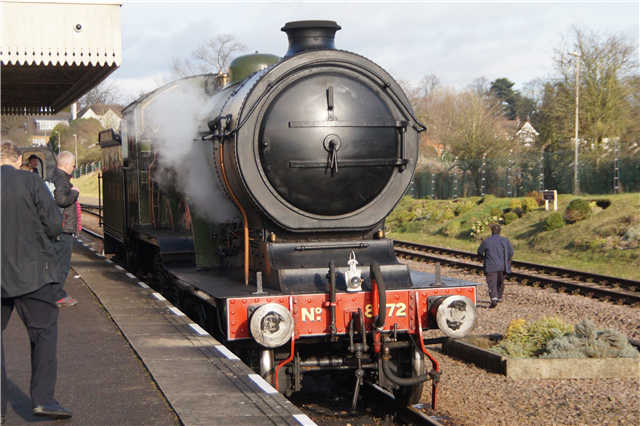The GER Class S69, also known as 1500 Class (and later classified B12 by the LNER) is a class of 4-6-0 steam locomotive designed to haul express passenger trains from London Liverpool Street station along the Great Eastern Main Line. Originally, they were designed by S. D. Holden, but were much rebuilt, resulting in several subclasses.
Seventy-one S69 locomotives were built between 1911 and 1921 and numbered 1500–1570. Fifty-one of these were built at the GER's Stratford Works and the remaining 20 by William Beardmore and Company. A further 10 locomotives were built by Beyer, Peacock and Company for the LNER in 1928.
At the time of their introduction, the "Claud Hamilton" 4-4-0s were becoming outclassed on the heaviest express. Although an enlarged 4-4-0 design was mooted, it was realised that any such design would have too high an axle load for the tracks of the Great Eastern Railway, which had a relatively low restriction. Another design constraint was the short turntables used at the time. This meant that a 4-6-0 design was decided upon, although the design was relatively short compared to similar designs introduced at the same time.
After the grouping the LNER ordered a further batch of 10 locomotives to ease a power shortage caused by the stalled development on a new class of 4-6-0 locomotives, and the cancellation of the planned suburban 2-6-4T tank locomotive due to the adverse press publicity caused by the Sevenoaks derailment of 1927. 81 were produced in total. Withdrawals started in 1945.
At nationalisation in 1948, seventy-two locomotives passed to British Railways. Withdrawals continued, and all were gone by the end of 1961. One engine, LNER No. 8572, has been preserved.
